The History of Music Games
20 years of rhythm-based rocking - from DDR to Guitar Hero

UmJammer Lammy - PS1 1999
As a spinoff of PaRappa, UmJammer features the same rhythm-based contextual button presses of its predecessor. Only this time, UmJammer plays guitar rather than rap over scrolling button icons. Again, freestyling rewards you with more points. New additions to gameplay include sound morphers like distort, reverb and pitch. Also, the storyline was incredibly wacky, yet the songs were less infectious.
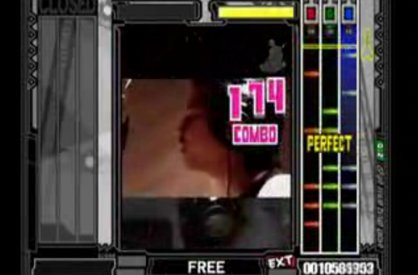
Guitar Freaks - Arcade Japan 1999, PS1 and PS2
Paving the way for Harominix’s Guitar Hero, Bemani’s Freaks introduced the plastic guitar peripheral before it became a runaway hit. Freaks’ guitar contained only three fret buttons and a pick lever. Players strum just as the notes for each fret crossed the yellow picking line. Unlike Guitar Hero though, each note scored points based on accuracy, and not on whether you hit or miss. Freaks could also be linked up to DrumMania and KeyboardMania in arcades, creating quite possibly the first iteration of Rock Band.
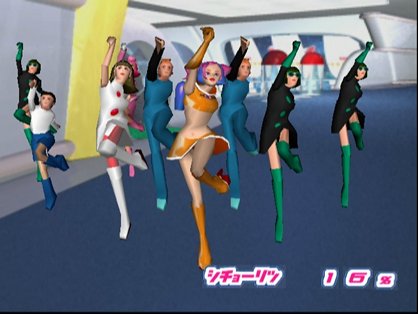
Space Channel 5 - DC Japan 1999, North America 2000, PS2 2003
Space Channel 5 Part 2 - DC Japan 2002, PS2 North America 2003
Controlling the galaxy’s hottest news reporter, Ulala, players memorized Simon-esque dance steps andregurgitated them backthrough the corresponding button inputs to advance the suitably zany story. Also, Michael Jackson showed up for some reason under the guise of Space Michael. It was creepy.
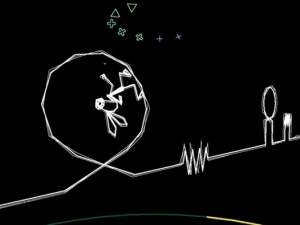
Vib-Ribbon - PS1 Japan 1999
An oddity this is - Vib-Ribbon creates crude vector-based pathways based on your music collection. This is due to the fact that the game was loaded onto the system’s RAM, enabling you to play any CD you wanted. Obstacles are created in real-time and you must input a button commandbeforeeach hazard. Screwing up devolves you from a rabbit to a worm. This sort of user-based level generator is a kind of predecessor to Audiosurf, the downloadable PC game from Steam.
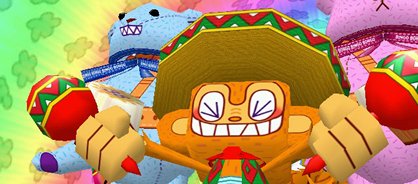
Samba de Amigo - DC Japan 1999, NA 2000, Wii 2008
As you can see, rhythm games were becoming more plentiful and it would take new gimmicks (read: instruments) to get players interested. Sonic Team created the woefully cute de Amigo - starring a grinning, maraca-shaking monkey. Your goal is to shake both maracas - included with the game - at the point in which the rhythm beats passed the shake indicators. There were six in total - two high, two in the middle and two at the bottom of the screen. Intermittently, you had to pose by pointing your maracas in two of the directions as indicated by your on-screen guide. Oh and songs were safe hits like “Macarena,” “Take on Me,” and “The Cup of Life.”
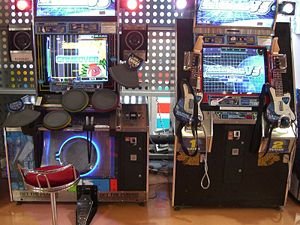
DrumMania - Arcade Japan 1999, PS2 Japan 1999
Another Bemani lovechild, this percussion malady enables you to drum away on a modified electronic drum kit to softcore anime-inspired tunes. Using five pads - hi-hat, snare, high tom, low tom and cymbal - you play in rhythm to the vertically scrolling notes, while being scored on accuracy. Essentially, the note scroll is a playable drum tablature. As mentioned previously, session linking is possible with Guitar Freaks and Keyboard Mania.
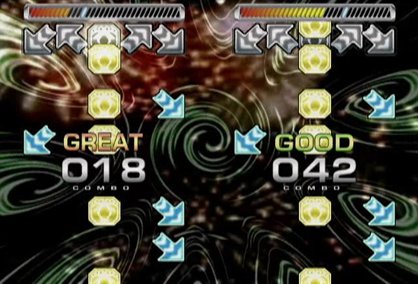
Pump it Up - Arcade Korea 1999, PS2 Korea 2004, PS2 & Xbox North America 2005
Think DDR. Now instead of left, right, up and down guide arrows, you have diagonal arrows and a center panel. While the change may seem insignificant, gameplay is actually altered just enough to cater to the freestyle-minded player. You actually feel like you’re dancing and not just jamming your hoof down on a pad. Modifiers (codes that effect arrow speed) are extensively used by top players - possibly to look more “fly.” And interestingly enough, the annual World Pump Festival offers more prize money than any other machine dance tournament. How’s that for a semi-DDR knockoff?
Weekly digests, tales from the communities you love, and more


ParaParaParadise - Arcade Japan 2000, PS2 Japan 2000
Also released by Bemani was this rhythm-based oddity based around Para Para - a popular Japanese solo dance, which uses preset movements for each dance. Relating to that, PPP is essentially DDR for the hands. Players stand in the middle of an octagonal sensor (not unlike theSega Activatorand throw out their arms to match the corresponding arrows onscreen. Songs were of the J-pop/European dance beat variety.

KeyboardMania - Arcade Japan 2000, PS2 Japan 2000
Another Bemani joint, KeyboardMania utilizes a 24-key keyboard for its rhythm-based gameplay. Players pound the selected keys as the notes scroll down towards the play point line. Again, gameplay awards points based on accuracy. Like Guitar Freaks and DrumMania before it, KBM can be linked to both games for super sessions. The last version was seen in 2002. How about a rerelease?


